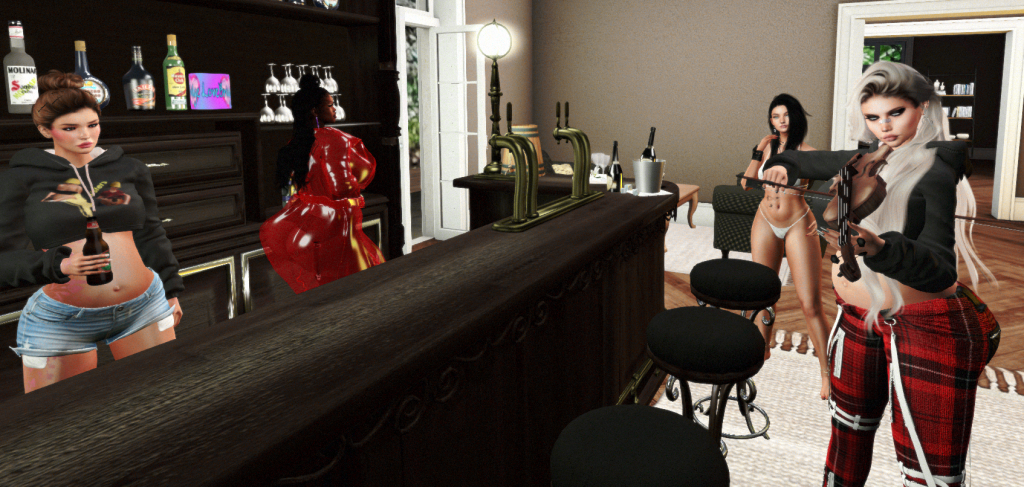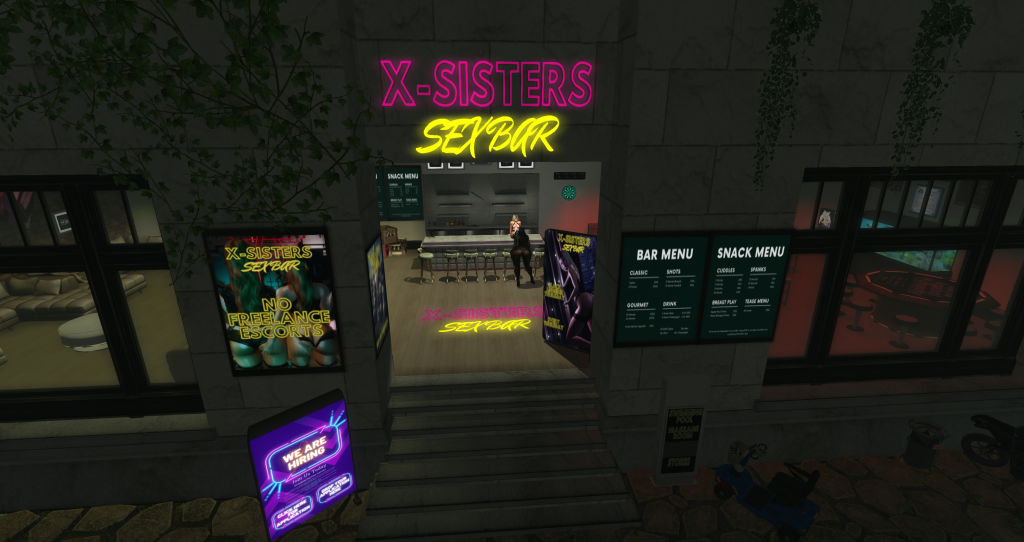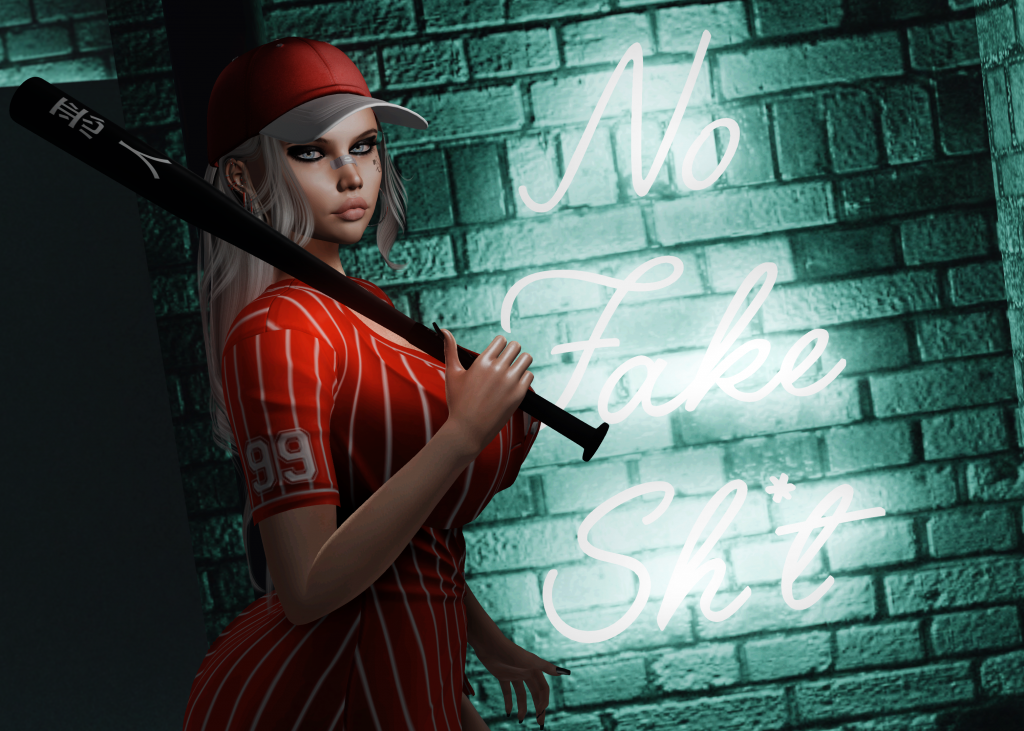Last Updated on: 26th March 2024, 04:58 pm
Welcome to the world of Second Life. It’s your very own virtual playground full of all kinds of possibilities. You can interact with people from all over the world. Use your cool 3D avatar for exciting adventures, make friends, and show off your creativity. You’re not just having fun here. You can improve useful life skills like how to team up and communicate with others. Sure, if you’re new here, mastering how to show feelings in Second Life might seem tough. But don’t worry! The best way to get started? Just dive right in. You’ll quickly see how fast you get the hang of this fantastic virtual world. Stick around for this guide on ‘How to Emote in Second Life’. It’s gonna help you a lot. Especially if you’re having some steamy Second Life sex.
In Second Life, showing your feelings might seem tricky at first. We mostly talk through text-chat, so it can be hard to tell what someone means sometimes. But, no worries, there are plenty of ways to show what you’re feeling in Second Life. Let’s get to it.

How To Emote In Second Life | What Are Emotes?
Roleplaying in Second Life borrows a lot from real life. And just like in real life, our emotions in Second Life play a big part in making things feel genuine. To do this, we have ’emotes’. They’re simple words or sentences you type out to describe what your character is doing or feeling.
For example, “/me waves” doesn’t make your character wave. It just means your character is waving in the storyline.
There are lots of people in Second Life, just like you and me, who love roleplaying. They come together from different corners of the virtual world and engage in text-based chats. These aren’t broad forum posts or long-distance chats. But cozy, close-by text converations where they share their stories and adventures.
Using emotes in these chats is like adding the secret sauce that makes the roleplaying feel that much better.

What Emotes Do
When we chat in Second Life, we use different methods depending on what we want to convey. There’s the simple text, like just saying “Hello!”. This simple, plain text is like your character speaking out loud. It’s like that friend in your group who always narrates their actions to make sure no detail was left out.
Sometimes though, life isn’t as simple as saying “Hello!”. Sometimes you need to show what your character is doing while they’re speaking. That’s where ’emote text’ comes in. It’s a great way to show your character doing something while talking. Or, it’s a great way if your character is doing something without speaking. It’s all about adding realness to the roleplaying experience.
Lastly, we have what we call ‘out-of-character’ or OOC chats. OOC is for when you need to chat about something not related to the game’s role-playing. You need to put information inside double brackets like this: (( )).
This way, people know it’s you – the real person – talking, not the character you’re playing. It’s a handy way to let others know when you need a quick break or simply want to chat about something different.
That’s ’emotes’ explained for you. Simple and easy, right? Let’s ’emote’ more often and make our roleplaying much more colorful and interesting in Second Life.

Para vs Semi-Para
In Second Life, two types of roleplay styles prove to be quite popular: Para RP and Semi-Para RP. They aren’t as complex as they sound!
Para RP, short for Paragraph Roleplay, is like writing mini stories. Players type out a full paragraph (maybe more) to describe their character’s actions, feelings, or thoughts. It’s all about adding detail and making the chat more engaging.
Semi-Para RP is a quicker version. Think of it like texting with a friend but, instead, you’re roleplaying. The messages are shorter, quicker to type, and to-the-point.
Both styles have their own charm and it all boils down to your personal choice. Some enjoy the rich detail of Para RP, while others prefer the fast-paced nature of Semi-Para RP. You get to choose the style that suits your tempo. So go on, start roleplaying, and have fun exploring!

How To Emote In Second Life | Emoting Styles
Choosing how to express your avatar’s actions and interactions — your emoting style — is like finding the perfect outfit for your character. It can dramatically shape your roleplaying experience. Once you’ve picked a style that feels right, it’s best to stick with it to keep things smooth and consistent. There are three main styles you can choose from:
Third Person – The “Doing” Style: With this method, you act out in detail what your character is actually doing. It’s like writing a mini story and reading it in the third person.
Example: “She circles her arms around his neck, slides in closer, and plants a tender kiss on his lips.”
This style is easy, flexible, and used by many. But sometimes, it may limit the other player’s responses as your actions are set in stone. However, many find it effortless and enjoy the fluent storytelling vibe it adds to the roleplay.
Third Person – The “Would” Style: This is somewhat like the “Doing” style. But instead of straightforward action, this style describes what your avatar might do or attempt to do, if given the chance. It allows for the other person to react.
Example: “She would wrap her arms around his neck, hoping to move in closer and steal a gentle kiss on his lips.”
The “Would” approach makes roleplay more interactive. It gives the other player the freedom to react in their own way to your character’s intended actions, making the interaction more organic.
First Person: The ‘First Person’ way is all about being more personal and intense in your interactions. You could go with “I,” or better yet, use ‘third person’ that is simpler to read and understand.
Example: “She wraps her arms around you embracing the magnetic pull as she finds herself gently kissing your lips.”
These three styles are your key choices. But roleplay is about creativity and innovation. Feel free to explore and experiment with other styles till you find the one that fits like a glove. The goal? To find the style that makes your roleplaying journey as exciting and enjoyable as possible!

How To Use Emotes
Getting used to emoting in roleplay is as easy as starting your narration in the chat with “/me”. Once you’ve got that down, you’ll mostly be focusing on two things — what your character is saying (speech) and what it’s doing (actions). That’s your emoting foundation right there!
As you get more comfortable roleplaying, you can start giving your emotes some extra sparkle. Sprinkle in things like smells, tastes, surroundings, body movement, and facial expressions. It’s like adding more color to your character’s world and making the experience more enriching for everyone involved.
But remember, every word should be adding something to the scene. If you’re describing something in detail that doesn’t add much to the story, like a raindrop trickling down a window pane, then maybe cut it down a bit. Going on and on about small things can take the focus off the bigger picture.
Finally, while putting your character’s thoughts into words can add richness to your roleplay, remember not to expect others to react to them. After all, just like in real-world, you can’t read someone’s mind. So, treat a character’s thoughts more like a private thought bubble rather than a speech bubble.
Stick to these basic pointers, and you’ll master the art of how to emote in Second Life in no time! You’ll be adding depth to your character, enriching the storyline, and enhancing the overall roleplaying experience – for you and other people.

Show Don’t Tell
One of the golden rules of writing – not just for roleplays but any form of storytelling – is ‘Show, Don’t Tell’. Rather than merely stating facts or feelings, paint a picture. Let’s take me as an example.
You could say, “/me is happy as she sits down”. That’s telling, right? But doesn’t it sound somewhat dull? Now, let’s try showing not telling.
Try saying, “/me sank into the chair, her eyelids fluttering close for a moment as a blissful sigh escaped her. A bright smile flickered to life on her face, lighting up her features.”
See the difference? The second one doesn’t just say Jess is happy. We can almost see her happiness. Simply said, ‘showing’ connects better, enriches the experience, and feels more real. In the world of Second Life roleplaying, this can truly be the secret sauce to level up your emoting game.
Top Tips for Roleplay Emotes
If you’re keen on diving deep into the world of “para” roleplay, here are some handy tips to help you stay afloat and make the most of your experience:
Keep Your Eyes and Ears Open: Start by observing, like a fly on the wall. Scan the chat, listen to the stories unfolding, and get a feel for the vibe before you jump in. A simple “Hello” is fine to start with. Remember, to stay relevant to the ongoing narrative, you need to know what’s been said!
Don’t Steal the Spotlight: It’s not a one-person show. Resist the urge to twist the focus onto yourself as the main character or force your ideas onto the ongoing narration. You’re part of a collaborative storytelling effort. The others might not appreciate an unexpected plot twist.
No Meta Gaming: Stay true to your character’s knowledge. Don’t roleplay what your character wouldn’t know yet. It keeps the playing field even.
Respect Player Autonomy: Remember, ‘God Modding’, or making yourself the most powerful player or shutting down others, is a no-go. Let others roleplay their characters. Focus on narrating your character’s actions unless you’re collaborating.
Give it Time: Let the storyline breathe. Resist the rush to push the story forward too quickly. It not only gives others a chance to engage but also allows the tale to unfold naturally.
These are your guiding stars for a fun-filled roleplay experience in Second Life – enjoy the ride!

How To Emote In Second Life | Round-Up
Emoting is just a matter of practice and finding a style that suits you best. So take it easy, relax, and have fun with it. You’ll see people who love longer, descriptive paragraphs, fondly coined “para” in Second Life lingo. And then there’ll be folks happier with shorter, crisper emotes.
What’s essential isn’t the length, but that your roleplay adds to the scene, making it more engaging. Remember, the end goal is to keep the roleplay immersive, so that the hours you spend on your roleplaying escapades paint vivid stories and create lasting memories. Go with what feels right, and you’ll find yourself smoothly sailing through the world of emoting in no time. Bookmark this “How to Emote in Second Life” guide and use it any time you need it.
Further Reading
If you’re looking to enhance your emoting skills further, you can complement this guide by exploring other resources available. There are numerous guides, tailored not only to how to emote in Second Life but in all virtual worlds.
“Thesaurus For Erotic Roleplay” for a more specific focus.
Caroline Takeda’s guide on emotes to gather additional insights and techniques.
My guide on how to have sex in Second Life
Emoting in Roleplay in Second Life
Subscribe to get all the latest posts straight to your email!
![How To Emote In Second Life | Guide [Updated]](https://www.jessandhergentlemen.co.uk/wp-content/uploads/2022/11/Caleb_085-1-1024x576.png)

